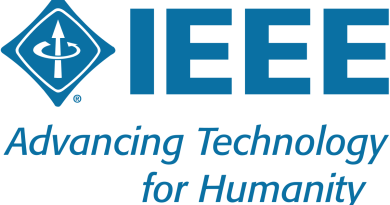Top Electrical Engineering Projects for Students – FYP Projects
Top Electrical Engineering Projects for Students – FYP Projects for Electrical Engineering Students
Electrical Engineering Projects is a fascinating and diverse field that covers various topics, such as power systems, electronics, communications, control systems, robotics, biomedical devices, and more. Electrical engineering projects are practical assignments or tasks that engineering students undertake to further their understanding of electrical principles, systems, and technologies. These projects allow students to apply their knowledge to design, build, and test electrical systems or components.
If you are an electrical engineering student looking for inspiration and ideas for your next project, you have come to the right place. In this blog post, we will share some of the top electrical engineering projects you can choose from for students. These projects are based on the latest trends and developments in electrical engineering and are suitable for different levels of difficulty and complexity.
Whether you are interested in electric machines, solar systems, electronic systems, power systems, control systems, communication systems, security systems, measuring instruments, automation systems, or mobile applications, you will find something that suits your interests and skills. So, without further ado, let’s dive into the list of top electrical engineering projects for students.
Electric Machine Projects
Electric machines convert electrical energy into mechanical energy or vice versa. They include motors, generators, transformers, relays, solenoids, etc. Electric machine projects involve designing, driving, controlling, or analyzing electric machines for various applications.
Some of the electric machine projects that you can work on are:
- Stepper Motor Controller: A stepper motor is an electric motor that can rotate in discrete steps. A stepper motor controller is a circuit that can control the speed and direction of a stepper motor using pulses of current. You can design and build a stepper motor controller using a microcontroller and some switches and display the speed and position of the motor on an LCD screen.
- Induction Motor Starter Using Auto Delta Star Starter: An electric motor works on the principle of electromagnetic induction. An induction motor starter is a device that can start an induction motor smoothly by reducing the initial current surge. An auto delta star starter is an induction motor starter that automatically switches the motor connection from star to delta after a certain time delay. You can design and build an auto delta star starter using relays, timers, and contactors.
- BLDC Motor Speed Control with RPM Display: A BLDC (Brushless DC) motor is a type of electric motor that uses permanent magnets instead of brushes and commutators. A BLDC motor speed control is a circuit that can vary the speed of a BLDC motor by changing the voltage or frequency of the input power supply. You can design and build a BLDC motor speed control using a microcontroller, a PWM (Pulse Width Modulation) signal, and an H-bridge driver circuit. You can also display the motor’s RPM (Revolutions Per Minute) on an LCD screen.
Solar System Projects
Solar system projects are projects that use solar energy as a source of power or illumination. Solar energy is the energy that comes from the sun in the form of radiation. Solar system projects involve designing, building, or testing solar panels, solar cells, solar chargers, solar lamps, solar inverters, etc.
Some of the solar system projects that you can work on are:
- Solar-Powered LED Street Light with Auto Intensity Control: A solar-powered LED street light is a street light that uses solar panels to charge a battery and power LED lamps. An auto intensity control is a feature that can adjust the brightness of the LED lamps according to the ambient light conditions. You can design and build a solar-powered LED street light with auto intensity control using a microcontroller, a light sensor, a solar panel, a battery, and LED lamps.
- Solar Mobile Charger: A solar mobile charger is a device that can charge your mobile phone using solar energy. A solar mobile charger comprises a solar panel, a voltage regulator, a battery, and a USB port. You can design and build a solar mobile charger using these components and test its performance under different sunlight conditions.
- Solar Inverter: A solar inverter is a device that can convert DC (Direct Current) power from solar panels or batteries into AC (Alternating Current) power for household appliances. A solar inverter consists of an oscillator, a transformer, a filter, and a protection circuit. Using these components, you can design and build a solar inverter and measure its output voltage and frequency.
Electronic System Projects
Electronic system projects use electronic components or circuits to perform various functions or tasks. Electronic components or circuits include resistors, capacitors, inductors, diodes, transistors, LEDs, ICs, etc. Electronic system projects involve designing, building, or testing electronic systems for various applications.
Some of the electronic system projects that you can work on are:
- Smoke Detector Alarm Circuit: A smoke detector alarm circuit is a circuit that can detect smoke and sound an alarm. A smoke detector alarm circuit consists of a smoke sensor, a buzzer, an LED, and a battery. Using these components, you can design and build a smoke detector alarm circuit and test its sensitivity and reliability.
- Automatic Railway Gate Controller: An automatic railway gate controller is a system that can control the opening and closing of railway gates based on the arrival and departure of trains. An automatic railway gate controller consists of a microcontroller, an IR (Infrared) sensor, a motor, a relay, and LED lamps. Using these components, you can design and build an automatic railway gate controller and simulate the system’s working.
- Fuse and Power Failure Indicator: A fuse and power failure indicator is a system that can indicate the status of the power supply and the fuse in a circuit. A fuse and power failure indicator consists of a transformer, a rectifier, a zener diode, a transistor, and LED lamps. Using these components, you can design and build a fuse and power failure indicator and test its functionality.
Power System Projects
Power system projects deal with generating, transmitting, distributing, or utilizing electrical power. Power system projects involve designing, building, or testing power systems or components, such as generators, transformers, transmission lines, distribution networks, load centers, etc.
Some of the power system projects that you can work on are:
- AC to DC Converter with Four Quadrant Motor Operation: An AC to DC converter is a device that can convert AC power into DC power. A four-quadrant motor operation is a mode of operation of a DC motor that can rotate in both directions and operate in both motoring and braking modes. You can design and build an AC-to-DC converter with four-quadrant motor operation using a bridge rectifier, a chopper circuit, and a DC motor. You can also control the speed and direction of the motor using a potentiometer.
- Electronic Voting Machine with Seven-Segment Display: An electronic voting machine is a device that can record and count votes electronically. A seven-segment display is a type of display that can show digits from 0 to 9 using seven LED segments. You can design and build an electronic voting machine with seven seven-segment displays using a microcontroller, some push buttons, and some seven-segment displays. You can also program the microcontroller to store and display the voting results.
- Electronic Soft Start for Three-Phase Induction Motor: An electronic soft start is a device that can start a three-phase induction motor smoothly by reducing the initial voltage or current surge. An electronic soft start consists of a microcontroller, a thyristor, and a zero-crossing detector. Using these components, you can design and build an electronic soft start for a three-phase induction motor and test its performance.
Control System and Microcontroller Projects
Control systems and microcontroller projects use control systems or microcontrollers to regulate or manipulate the behavior or output of other systems or devices. Control systems use feedback loops to compare the actual output with the desired output and adjust the input accordingly. Microcontrollers are small computers that can be programmed to perform specific tasks.
Some of the control system and microcontroller projects that you can work on are:
- PID Controller for DC Motor Speed Control: A PID (Proportional-Integral-Derivative) controller is a type of control system that can adjust the input signal based on the error signal between the actual output and the desired output. A PID controller for DC motor speed control is a system that can vary the speed of a DC motor by changing the duty cycle of a PWM signal based on the error signal between the actual speed and the desired speed. You can design and build a PID controller for DC motor speed control using a microcontroller, a potentiometer, an encoder, and a DC motor.
- Temperature-Controlled Fan using Arduino: A temperature-controlled fan using Arduino is a system that can control the speed of a fan based on the ambient temperature. A temperature-controlled fan using Arduino consists of an Arduino board, a temperature sensor, a transistor, and a fan. You can design and build a temperature-controlled fan using Arduino using these components and program the Arduino board to read the temperature sensor value and adjust the fan speed accordingly.
- Line Follower Robot using Arduino: A line follower robot using Arduino is a robot that can follow a predefined path marked by a black line on a white surface. A line follower robot using Arduino consists of an Arduino board, IR sensors, motors, and wheels. You can design and build a line follower robot using Arduino using these.
Frequently Asked Questions (FAQs):
1. Why are electrical engineering projects important for students?
- Electrical engineering projects help students apply theoretical knowledge to real-world problems, develop practical skills, and gain hands-on experience.
2. What are some beginner-friendly electrical engineering projects for students with limited experience?
- Projects like LED blinkers, simple motor control, and basic circuit design are excellent for beginners.
3. Can you suggest intermediate-level electrical engineering projects for students looking to challenge themselves?
- Intermediate projects include building small robots, designing digital thermometers, or creating a basic home automation system.
4. Are there advanced electrical engineering projects suitable for senior-level students or those pursuing graduate degrees?
- Advanced projects could involve developing a solar tracking system, building a quadcopter, or designing a smart energy management system.
5. How can students find project ideas for electrical engineering?
- Students can explore project idea books, online forums, university resources, or consult with professors and mentors for inspiration.
6. What are some popular project themes in electrical engineering besides electronics and robotics?
- Renewable energy, IoT applications, smart homes, and automation are trending themes for electrical engineering projects.
7. Are there resources available for students to learn and practice electrical engineering project skills?
- Yes, online tutorials, maker communities, and university labs often provide resources and support for student projects.
8. What are the key considerations when choosing an electrical engineering project topic?
- Consider your interests, available resources, complexity, and the potential for learning and skill development.
9. Can electrical engineering projects be collaborative efforts among students?
- Yes, collaborative projects foster teamwork and diverse skill sets, making them valuable experiences for students.
10. How can students balance their coursework with project work?
- Effective time management, setting realistic goals, and seeking guidance from professors can help students manage their academic workload alongside projects.
11. Can electrical engineering projects lead to research opportunities or publications for students?
- Yes, successful projects can be expanded into research endeavors, and findings may lead to publications in relevant journals or conferences.
12. Are there competitions or hackathons where students can showcase their electrical engineering projects?
- Yes, many competitions and hackathons welcome electrical engineering projects, offering opportunities for recognition and networking.
13. How can students document and present their projects effectively?
- Maintain detailed project logs, create documentation, and prepare clear presentations to effectively communicate your project's goals and outcomes.
14. Are there online platforms or communities where students can share their projects and get feedback?
- Websites like GitHub, Hackster.io, and Instructables are excellent platforms for sharing projects and receiving feedback from the maker and engineering communities.
15. What benefits do students gain from completing electrical engineering projects?
- Students acquire practical skills, problem-solving abilities, a portfolio for job applications, and a deeper understanding of electrical engineering concepts through project work.



